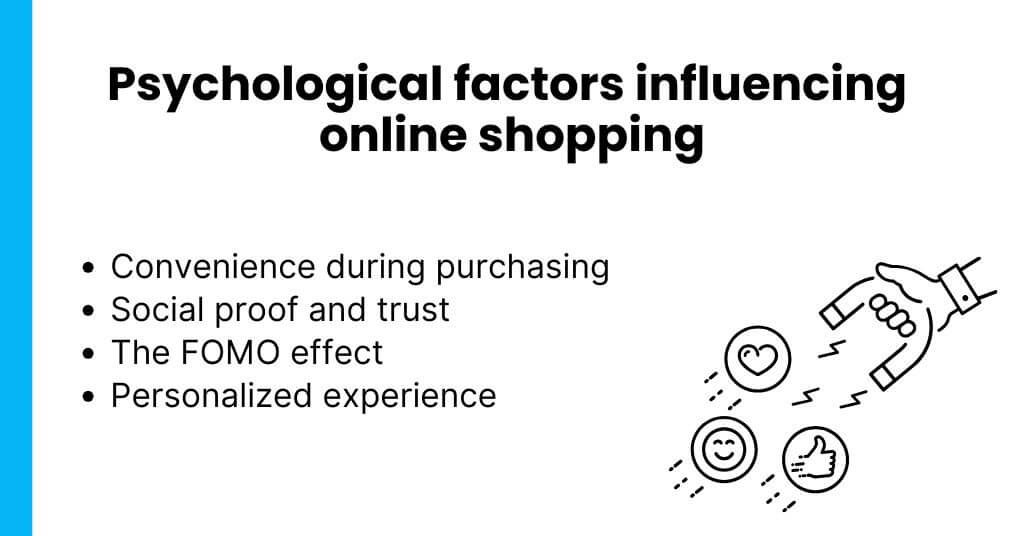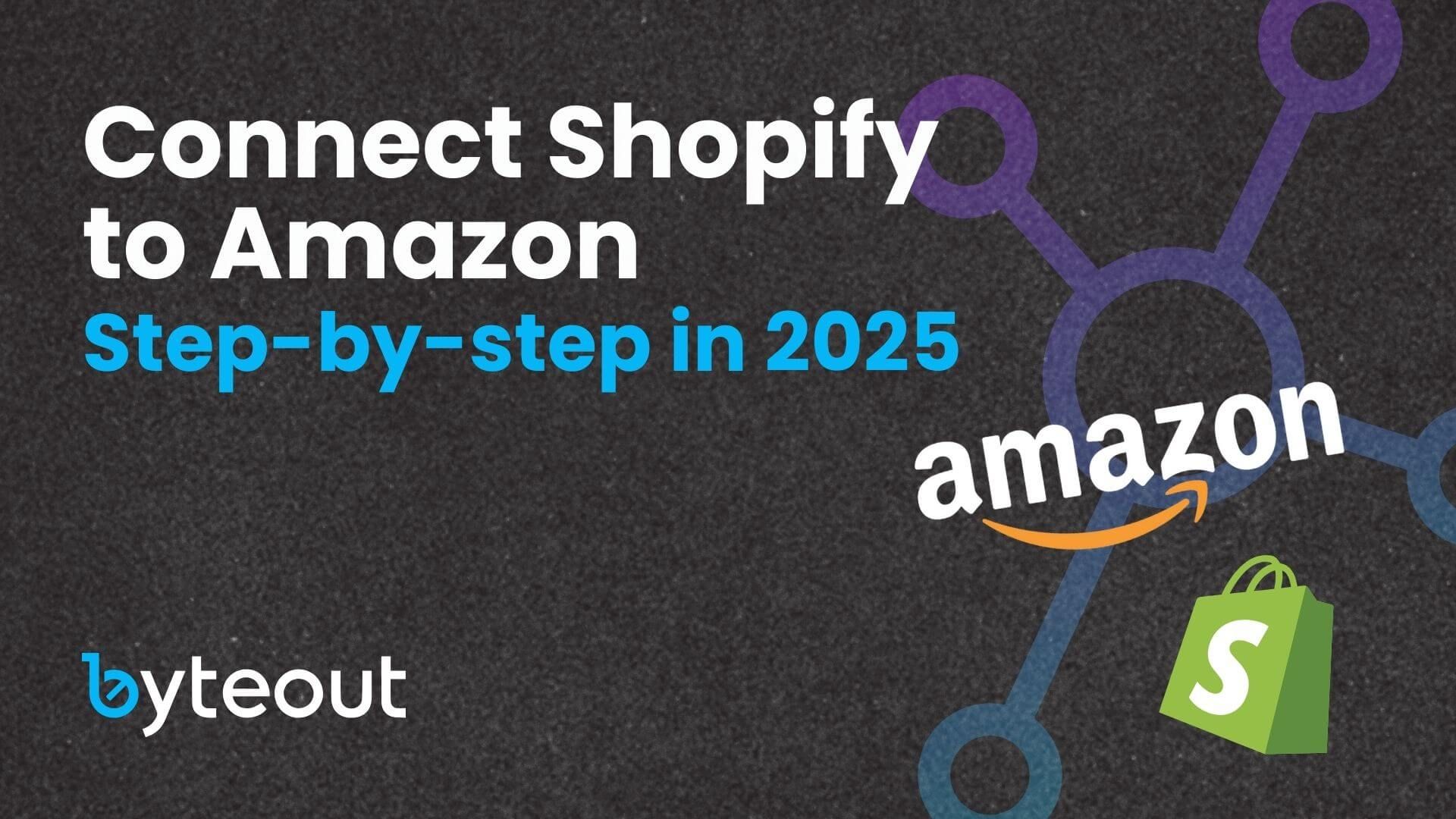
Connect Shopify to Amazon: Step-by-step in 2025
In 2025, you can connect Shopify to Amazon by installing an integration app like Shopify Marketplace Connect or Amazon MCF/Buy with Prime, linking your Amazon Seller Central account, and syncing your products, inventory, and orders. This setup lets you sell on Amazon while also building a direct-to-consumer (DTC) channel on Shopify, where you own your customer data and margins.
Table of Contents
Why sell on Shopify and Amazon
Amazon’s unmatched scale in the U.S. market. Hundreds of millions of Americans regularly shop on Amazon, and nearly half of all online spending nationwide flows through its platform.
Amazon captures about 40 cents of every dollar spent online in America. Plus, millions of sellers rely on Amazon’s U.S. marketplace to reach customers. This dominant reach sets the stage for trends in how sellers are expanding beyond Amazon.
Many U.S. Amazon sellers in 2025 are diversifying their sales channels, often by launching direct-to-consumer (DTC) websites on Shopify. This Amazon-to-Shopify movement is driven by a need to build independent brands, reduce fees, and reach customers outside of Amazon’s ecosystem.
Shopify for Amazon sellers
About 80% of Amazon third-party sellers sell on different ecommerce platforms (beyond Amazon itself). Shopify is a top choice for these sellers’ own online stores, allowing them to create a branded shopping experience and retain customer data that Amazon would otherwise control.
Throughout the forums and communities, you can find sellers cite Amazon’s rising fees and policies as a reason for branching out to channels like Shopify, Walmart Marketplace, TikTok Shops and other social commerce platforms.
As one ecommerce advisor noted, “I don’t know a single Amazon-native seller who is not expanding away from Amazon… historically sellers did 95% of revenue on Amazon, but going forward they’ll average 75%” (Source: ModernRetail). This indicates a significant strategic shift toward omnichannel selling in 2025.
For those who want to understand why is going DTC a smart move for sellers, we made a free course for sellers going DTC.
Can Shopify integrate with Amazon in 2025?
Yes – in 2025 you can integrate Shopify with Amazon and make it work flawlessly. The connection is straightforward with tools allowing your products, inventory, and orders to sync smoothly between the two platforms. Once set up correctly, sellers can manage both channels seamlessly from one place.
Some of the available tools for integration are:
This app lets you publish Shopify products to Amazon, sync inventory and prices, and pull Amazon orders back into Shopify. It’s best for merchants who want one app inside Shopify to manage marketplace listings (Amazon, Walmart, eBay, Target Plus) from the Shopify admin.
One app from Amazon that does two things:
- MCF (Multi-Channel Fulfillment): fulfill Shopify orders from your FBA inventory.
- Buy with Prime (BWP): add a Prime checkout option on selected PDPs and (now) integrate with your existing Shopify cart
This option is great when sellers already use FBA and want Prime trust and speed on their own DTC store.
And some 3rd-party tools you can use for the integration that we’d like to mention are:
| Tool / App | Best For | Key Features | Limitations |
| Shopify Marketplace Connect (native app) | Sellers who want a simple, built-in option | Publish Shopify products to Amazon, sync inventory & prices, import Amazon orders into Shopify | Limited advanced rules, fewer bulk options |
| Amazon MCF & Buy with Prime | Sellers already using FBA | Fulfil Shopify orders with FBA inventory (MCF), offer Prime checkout on Shopify | Relies on FBA inventory, limited to Amazon fulfilment |
| CedCommerce Amazon Channel | Sellers with large or complex catalogs | Advanced listing rules, bulk editing, multiple marketplace support | More complex setup, extra cost |
| LitCommerce | Multi-channel sellers (Amazon, eBay, Walmart) | Central dashboard, product listing management, cross-channel sync | Some learning curve, extra configuration |
| Sellbrite (by GoDaddy) | Small to mid-sized sellers | Easy listing tool, order & inventory sync, works with multiple channels | Less flexible for enterprise needs |
| Channable | Sellers needing advanced automation | Feed management, bulk rules, multi-marketplace automation | More technical, subscription cost |
| Amazon MCF by WebBee | FBA sellers wanting fulfilment automation | Sync Shopify with FBA inventory, automate order fulfilment | Limited beyond FBA integration |
Quick chooser (what to use when)
For merchants whose primary goal is simply to list their existing Shopify catalog on Amazon and keep inventory in sync, the most efficient starting point is Shopify Marketplace Connect. It is Shopify’s native integration, designed to manage listings, stock levels, and orders between Shopify and Amazon with minimal configuration.
And for sellers already leveraging Fulfilled by Amazon (FBA), the best path is to extend that infrastructure into Shopify using the Amazon Multi-Channel Fulfillment (MCF) and Buy with Prime app.
For sellers with more custom needs, such as advanced listing rules, bulk editing, or multi-marketplace operations, solutions like CedCommerce Amazon Channel or LitCommerce provide additional flexibility and control.
Benefits of linking Shopify and Amazon for multichannel ecommerce
Amazon is a powerful sales platform, but long-term brand growth requires more than just a marketplace presence. If sellers connect Shopify to Amazon, they can take advantage of Amazon’s reach while building a direct-to-consumer (DTC) channel that they fully own.
Reach + Control
Amazon brings scale. Shopify brings ownership. Linking the two lets you sell to millions of Amazon shoppers without giving up control of your brand experience. On Shopify, you decide how products are presented, how customers interact with your store, and what story your brand tells.
Customer data ownership
On Amazon, customer relationships stop at the transaction. On Shopify, you gain access to customer emails, repeat purchase behaviour, and lifetime value metrics. That data allows you to launch email campaigns, loyalty programs, and subscriptions: all of which build retention that isn’t possible on Amazon.
Multi-channel inventory sync
If you connect Shopify to Amazon, that means real-time inventory sync. Stock updates instantly reflect across both platforms, preventing overselling, out-of-stock errors, and manual reconciliation headaches.
Better margins through repeat sales
Every Amazon order comes with referral fees and ad costs. A repeat customer on Shopify costs a fraction of that to win back. Once you’ve attracted buyers on Amazon, you can encourage them to buy again directly through your Shopify store, improving profit margins over time.
Compared to Amazon’s referral fees (usually 8-15% depending on category), Shopify’s transaction fees are much lower, especially when paired with Shopify Payments. That margin difference matters as you scale.
Why a DTC store matters for brand growth
This is critical for all ambitious sellers to understand: having a DTC store isn’t optional if you want to grow beyond Amazon. Shopify becomes your brand’s headquarters and the channel where you set pricing, own customer relationships, and build long-term loyalty. Without it, you’re always renting customers from Amazon. With it, you’re building a brand that can scale independently of marketplace algorithms and fees.
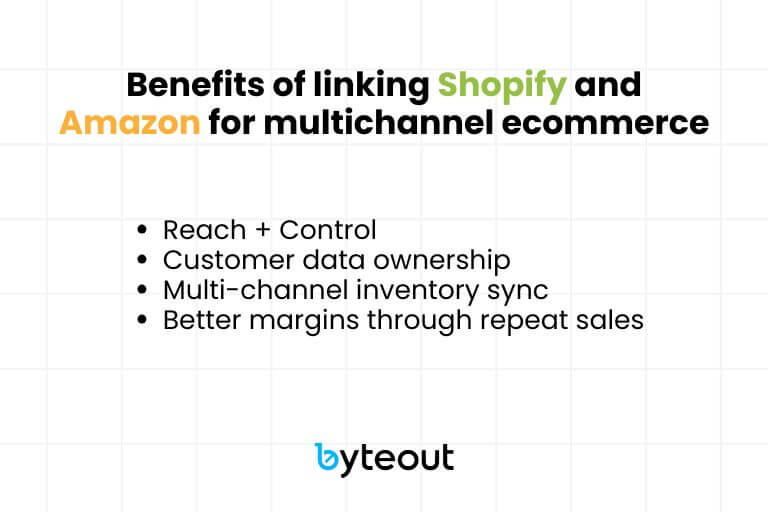
Step-by-Step: How to connect Shopify to Amazon via Seller Central in 2025
Step #1 Compliance check
What you do:
- Open/upgrade to an Amazon Professional Selling Plan ($39.99/month, required for integrations)
- Check if your products need category or brand approval.
- Ensure every product has a valid product ID (UPC/EAN/ISBN) or request a GTIN exemption if you don’t.
- Confirm images follow Amazon’s image requirements (pure white background, min. 1600px).
Without this foundation, your listings can be blocked, suppressed, or rejected.
Step #2 Install the app to connect Shopify to Amazon
Decide which options is the best one for your case. If you need any help, feel free to book a free consult with Amazon-to-Shopify experts. The choice impacts your workflow, error handling, and scalability.
- Install Shopify Marketplace Connect (or other chosen app).
- Sign in and link your Amazon Seller Central account.
- Authorize required permissions for listing and inventory/order sync.
Step #3 Prepare Shopify product data
Amazon relies on IDs + strict data formats for catalogue integrity, so this step needs your additional attention.
- Ensure unique SKUs across catalog.
- Enter Barcode/GTINs in Shopify.
- Apply for a GTIN exemption if needed.
- Verify brand/category approvals.
- Upload compliant images using Amazon’s standards.
Step #4 Map products to Amazon
Wrong mapping leads to duplicates, lost reviews, suppressed listings. You don’t want that. So:
- If a product exists on Amazon, match it to the correct ASIN.
- If new, create a new ASIN with full attributes.
- Set up parent–child variations (sizes, colors) properly.
Step #5 Configure inventory sync and shipping&returns
- Enable real-time sync between Shopify and Amazon.
- Choose fulfillment:
- FBM (Fulfilled by Merchant) → you handle shipping.
- FBA (Fulfilled by Amazon) → Amazon holds and ships your inventory.
- Optionally enable MCF (Multi-Channel Fulfillment) so FBA stock can also fulfill Shopify orders.
- For FBM, set up shipping templates in Seller Central.
- For FBA/MCF, use Send to Amazon workflow to send inventory in; Amazon then controls delivery promises and returns.
Step #6 Test the integration
Testing small avoids big catalog errors so don’t skip this step so you make sure everything is well connected. We’d recommend to:
- Sync only 5–10 SKUs.
- Place a test Amazon order and check:
- Order flows into Shopify.
- Inventory decrements.
- Tracking updates sync back.
Step #7 Go live & monitor
If everything works, you can:
- Push your full catalog.
- For the first week, monitor daily:
- Listing errors (attributes/images).
- Suppressed listings (category/brand).
- Price warnings.
- Account health signals in Performance Dashboard.
Amazon to Shopify product import guide
When you’ve been selling on Amazon for a while, it’s easy to forget that all your hard work (optimizing titles, uploading images, managing variations) lives inside Amazon’s ecosystem. It works there, but it doesn’t automatically give you a foundation for building your own DTC Shopify store. That’s why many Amazon sellers who decide to launch a Shopify shop face the same question: should I start fresh, or can I pull my existing Amazon listings into Shopify?
There are good reasons to import. If your catalog is already polished on Amazon, bringing that data into Shopify saves hours of re-entry. It also ensures consistency over the SKUs, titles, and description. How you bring products over depends on your situation. If you only have a small handful of products, you can export your listings from Amazon as a flat file and then reshape that file into Shopify’s CSV format.
For larger catalogs, most sellers don’t want to wrestle with spreadsheets. Tools like Shopify Marketplace Connect can connect directly to your Amazon Seller Central, pull product data, and publish those items into Shopify.
All serious sellers need to understand that importing products is never “plug and play.” Amazon’s data doesn’t map one-to-one with Shopify’s. For product images, Amazon stores them differently, and sometimes the links don’t carry over, so you’ll open your new Shopify site only to see empty boxes where photos should be.
Descriptions also often come in incomplete. The bullet points you carefully wrote in Amazon may not import at all, or the HTML formatting might break. Variations are another sore point. Amazon structures them as parent/child ASINs, while Shopify uses “options” and “variants.” If you don’t map them carefully, you’ll end up with fragmented products in your Shopify store.
So the takeaway is this: importing your Amazon catalog into Shopify is a smart move when you want speed, consistency, and a head start on building your DTC channel. But whichever method you choose: CSV for small sellers, integration apps for mid-sized catalogs, or migration services for the big players, plan for a round of cleanup afterward. Your Shopify store is your brand’s home. It deserves more than just a copy-paste job.
Scaling beyond the connection
Connecting Amazon to Shopify is only the first step. That integration ensures your products, inventory, and orders move between platforms. But to actually grow as a direct-to-consumer brand, a Shopify store requires a bit more. To build a channel you fully own, your store should have:
- Good and clean design – A storefront that reflects your brand identity and builds trust
- High-converting product pages – Optimized layouts with clear messaging, comparison details, and strong CTAs
- Retention tools – Email marketing flows, loyalty programs, and subscription options to keep customers coming back.
How we support Amazon sellers
Our role is to help Amazon sellers turn marketplace success into long-term brand growth and build Shopify store for Amazon sellers.
We provide a full process:
Planning & strategy. We review your Amazon catalog and sales data, then define how your brand translates to Shopify. This includes deciding which products to lead with and how to position them in a DTC environment.
Technical setup. We handle the full Shopify build, connect it to Amazon through approved integrations, and ensure inventory, fulfillment, and order flows work reliably
Store design. We design a professional Shopify storefront and optimize product pages for conversion.
Marketing strategy. Launching a Shopify store needs a lot of work but it’s only the beginning – and we leave no sellers behind. You can get a full marketing strategy made by people who know how to make a profitable online selling business.
Launch. After launch, we’re still there to make sure everything works great.
You’d like a DTC store? The next step is…
If you’re an Amazon seller ready to grow beyond the marketplace, we can help you build a Shopify store that not only connects but converts and retains customers.
Book a free consultation and see how your Amazon success can become a direct-to-consumer brand.
FAQs
-
How to link Shopify to Amazon?
Amazon Sellers can connect Shopify to Amazon using Shopify Marketplace Connect or approved third-party apps, which sync your products, inventory, and orders between both platforms.
-
Can Shopify integrate with Amazon without an app?
No, you need an integration app such as Marketplace Connect or a third-party solution.
-
What’s the best Shopify to Amazon integration app or plugin?
For most Amazon sellers, Shopify Marketplace Connect is the best choice because it’s native and simple, but some sellers may prefer other apps depending on their needs.
-
Do I need an Amazon Professional Seller account to connect Shopify?
Yes. You need an active Professional Seller account on Amazon Seller Central to use Shopify Marketplace Connect or any other integration plugin. The Individual plan doesn’t allow these connections.
-
Can I import Amazon products into Shopify?
Yes, but it isn’t plug-and-play. You can use CSV exports, integration apps, or migration tools, but expect to adjust images, descriptions, and variants after import.
-
If you connect Shopify to Amazon, does it help SEO?
Not directly. SEO depends on how you optimize your Shopify store itself, but having a DTC site improves brand visibility and long-term growth outside of Amazon.
-
Can someone else connect Shopify to Amazon for you?
Absolutely, agencies like ours specialize in building Shopify stores for Amazon sellers, handling integration, store design, and optimization so you can focus on growth.
Conclusion
Amazon remains the largest online marketplace in the US, capturing nearly half of all ecommerce spending. Its scale is unmatched, and it’s where millions of sellers continue to thrive. But in 2025, growth isn’t about choosing Amazon or Shopify, it’s about using both together.
The sellers who choose to connect Shopify to Amazon unlock the best of both worlds. They keep Amazon’s reach, while gaining the control that comes with running their own DTC channel. Integration makes it possible to sync products, inventory, orders, and fulfillment seamlessly. But the true value goes further:
Reach + control. Amazon brings traffic, Shopify brings ownership.
Customer data. Build loyalty and lifetime value that Amazon doesn’t allow.
Multi-channel sync. Prevent overselling and manage stock efficiently.
Better margins. Use Amazon for acquisition and Shopify for profitable repeat sales.
DTC growth. A Shopify store is your brand headquarters — the only channel you truly own.
If you’re serious about scaling beyond the marketplace, now is the time to make this connection and build a Shopify store that supports long-term brand growth.
We’ve helped many sellers turn their marketplace presence into full-blown brands.
Let’s do the same for you – get in touch today!
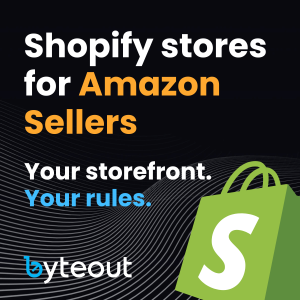
Your Amazon store needs a partner
We build and grow your Shopify DTC business together with Amazon.
Find out how to own your audience and not depend only on Amazon high fees.
Author: Dusan Popovic
Our ecommerce nerds recommend reading

Best Amazon FBA course: Top picks for 2025

Connect Shopify to Amazon: Step-by-step in 2025
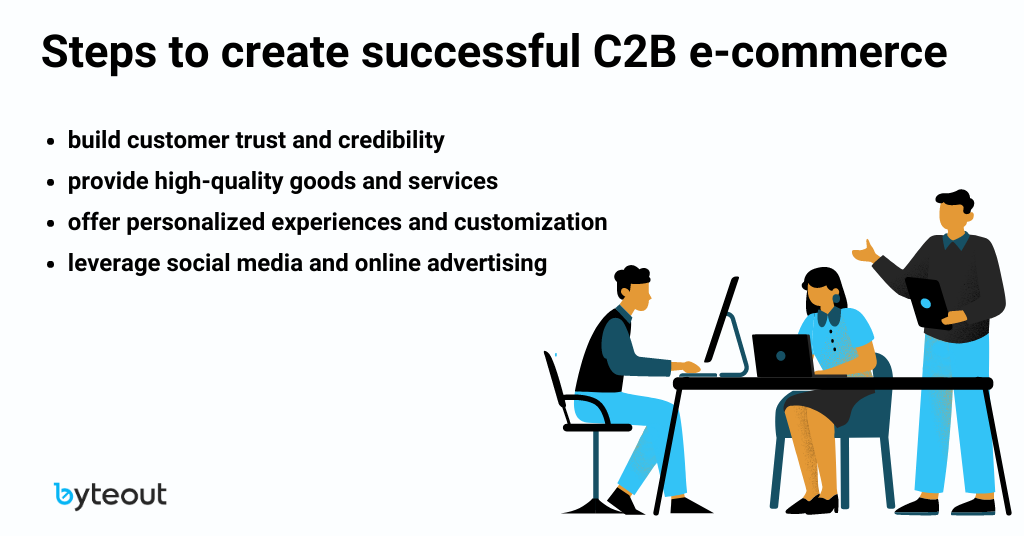
C2B e-commerce
